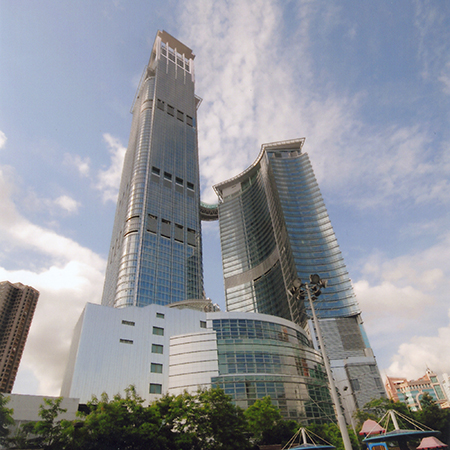AET Flexible Space explain how, by adopting floor level services early on, designers can make best use of space.
This article by AET Flexible Space, will discuss the merits of adopting underfloor air conditioning in tall buildings.
The term “skyscraper” typically describes a building more than 100m tall with at least 40-50 floors, although in London this could be just 20 floors, and they are mostly designed for offices, commercial and residential use.
Skyscraper design is considered to be especially complex, particularly given the balance required between economics, engineering and construction management.
Space management during the smart and sustainable design of such buildings can lend itself to potentially staggering savings in construction materials and time on site and the ongoing operational costs.
With any project, considering the services strategy early in the design phase is recommended and even more so in tall buildings. Services specification level, interfaces and distribution are critical but also difficult and costly to change later in the design.
Underfloor air conditioning has been adopted in a number of tall buildings around the world. One example of where the developer truly embraced services innovation can be seen in the world’s fifth tallest building, The Center in Hong Kong.
AET worked closely with consultants Ove Arup and developer Li Ka Shing during the design phase of this impressive building; the first in Asia to adopt the concept of underfloor air conditioning, doubling up the use of the plenum beneath the raised access floor as the ventilation zone, as well as essential cable management.
This double usage of the plenum means that the ventilation zone in the ceiling void can be eliminated, a saving of 600mm. A minimum floor void of 150mm can be increased to around 300mm to accommodate the floor recessed fan terminals, still amounting to an overall space saving per floor of around 450mm.
By adopting underfloor services, The Center, standing at 352m tall saved around 35m in overall height, amounting to 10% overall height saving.
Simple calculations at the time showed that this 35m of additional structure would have cost around $7million on façade materials alone, not taking into consideration labour and other construction costs.
A different approach could also be applied in this scenario; the developer could have chosen to maintain the original height of the building and save the wasted space by adding ten floors to the building design, consequently generating increased rental income.
Underfloor systems are typically zonal systems, which with supervision and control, energy consumption can be regulated according to the changing use of the space, attracting LEED points and generally encouraging operational efficiency.
Underfloor systems are inherently flexible and the modular plug and play equipment makes it relatively simple to adapt to changing requirements of the space. Zone layouts can also easily be reconfigured and transforming space from Cat-A to Cat-B for tenant occupation is fast and cost effective with little pipe or ductwork to reconfigure, and no working at height in the ceiling service zone.
Fresh air intake must also be carefully considered in high rise buildings which are often located in dense urban locations with poor outdoor air quality.
The zoned nature of underfloor systems means that fresh air can easily be introduced directly into the system to enhance indoor air quality and with each zone served by an individual down flow unit, cross contamination is reduced.
Taking an example from another building in Hong Kong, the 320m tall Nina Tower, ventilation was carefully designed in conjunction with the underfloor air conditioning system to deliver sufficient fresh air to the commercial office space on seventeen floors. The building was awarded “Excellent Class” for Indoor Air Quality in 2011 and continues to maintain the same standard.
Looking at the above examples, it is evident that applied thinking to the design of services in tall buildings is of critical importance. It can also present opportunities for developers and clients to maximise their return and upscale their investment. Underfloor air conditioning, the only way is up.
View PDF



